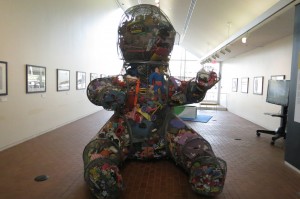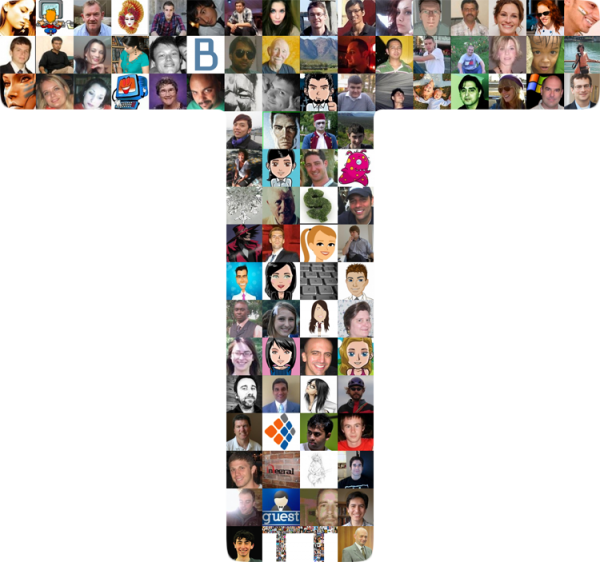In this post I would like to continue my review of the Integrated Network for Social Sustainability (INSS) meeting in Charlotte, North Carolina. As I mentioned in last week’s post I was fortunate enough to have been selected to present a poster as part of the Saturday afternoon poster session. Further details of the poster and the full abstract are available here, and I was pleased to see many other interesting topics that readers may find worth thinking about.
An array of presenters from many disciplines addressed issues as broad as earthquake risk analysis, teaching sustainability in civil engineering, promoting ethics, culture and community based research and a very interesting permacuture collective run with the aid of students and staff of Ball state University. Read an outline here.
The poster session sat within a large and varied program that included an art exhibition called Sustain me Baby, that included a giant model baby filled with plastic toy trash and photos of dead baby albatrosses, and various installations placed throughout the city representing the problem of plastic waste. See the Keeping Watch website for further details.

The Other Toy Story
The meeting started on Friday with a tour of sustainable manufacturing, that included a visit to a brick works owned and operated by Boral. The Boral website goes into the detail of their sustainable design frame, but the thing I found most interesting about the factory was the fuel used to heat the kiln.
Boral buy waste sawdust from local saw mills, have an in-house grinding and drying process for the dust that they then use as fuel for the kiln. This has brought costs down dramatically as well as providing a market and use for what is essentially a waste product.
The tour was followed by a dinner presentation about aquaponics. This is a system for growing vegetables that relies on using a fish pond and a series of pipes to produce large volumes of vegetables in a relatively small area. The plants grow in pipes fed by the pond water, while the fish provide the nutrients through their excrement. 90% of the water is reused, as the plants remove the nutrients as the water passes so it can be pumped back into the pond in a continuous circuit.
Ron Morgan wove a fantastic story around his project to build gardens in both North Carolina and Haiti, recounting tales of homeless genius, chance meetings and ordinary people leaping into the unknown at the drop of a hat (Sam Fleming for one). Read this article for an outline of his ideas, it is quite an incredible and moving tale.
There are plenty of videos on the web that demonstrate how the system works and how you can build one for a few hundred dollars, start by taking a look at this presentation on Youtube. Ron’s partner Sam Fleming explains the system. He was also on hand to describe the technicalities on Friday evening, and the pair were great entertainment and inspiring.
This type of system really does appear much more efficient than modern industrial production methods, and is readily transferable to inner city production. Ron spoke of his experiences of transferring this system to the earthquake hit island of Haiti, and ideas of how to use the massive quantities of food that it can produce to feed populations that find themselves living in food deserts for any number of reasons.
The conference Keynote Speaker was Julian Agyeman. Readers should take a look at his website for a full description of his work, as it is broad and immense.
This was a hard hitting delivery, in which he outlined his concept of ‘just sustainabilities’ and argued that “integrating social needs and welfare, offers us a more ‘just,’ rounded and equity-focused definition of sustainability and sustainable development, while not negating the very real environmental threats we face” (taken from conference notes).
His focus on social justice led to a call to read sustainability from a broader standpoint, and asked some questions and raised some issues about consumption and justice that many here in the so called industrial world might have difficulty reconciling.
Saturday also included a series of case study presentations, with representatives from SMART CN Project, the National Academy of Engineering, and Habitat for Humanity presenting about their work. They all do interesting stuff. The day closed with a panel discussion entitled Art, Manufacturing, Sustainability.
Sunday started with presentations from virtual attendees, demonstrating both the possibilities and problems that virtual attendance offers and poses. After another session of working group reporting came a session on network engagement tools, before assessment and adjournment.
I had a great time as I think did everyone else. The conference was well organized and there were a wide variety of interests and fields represented. I made a lot of new friends and learned a lot.




